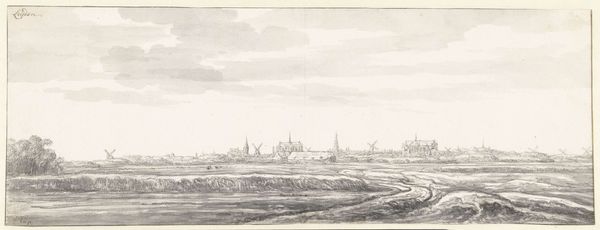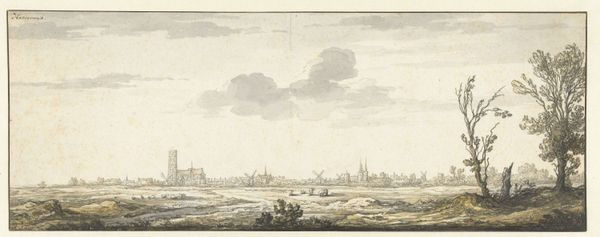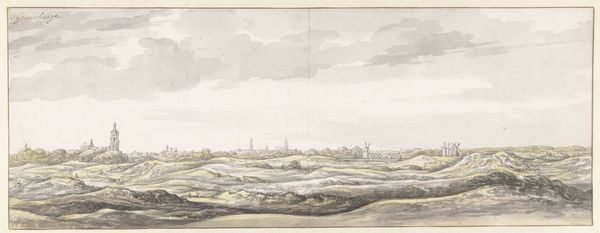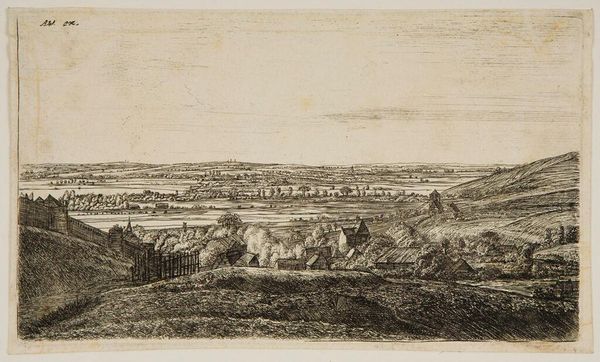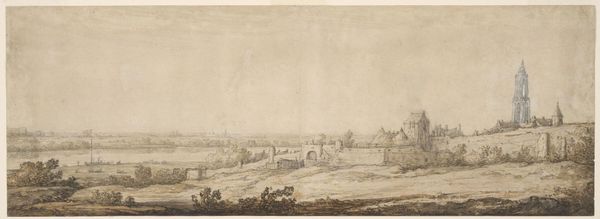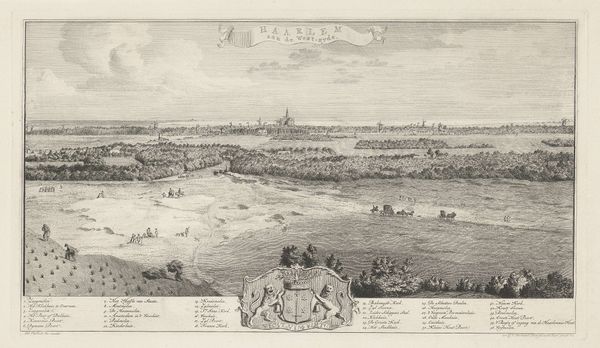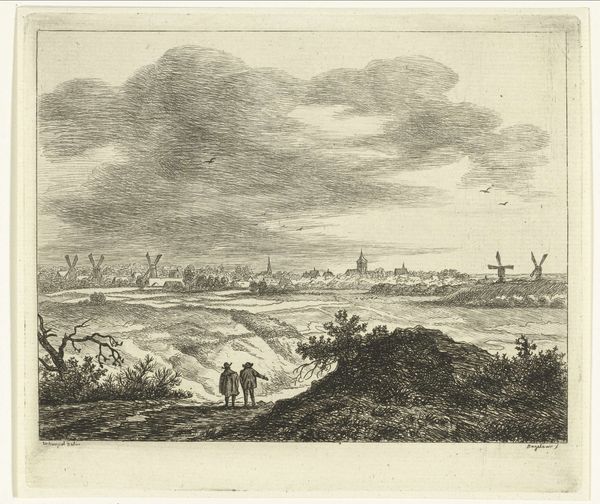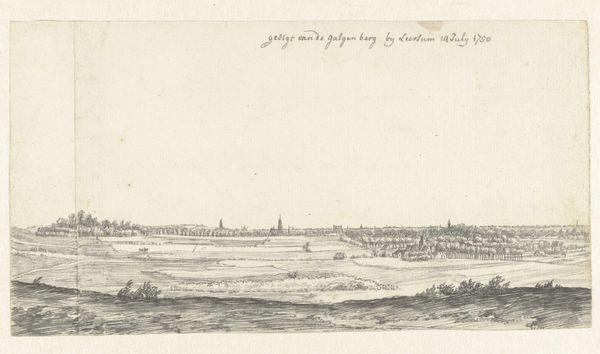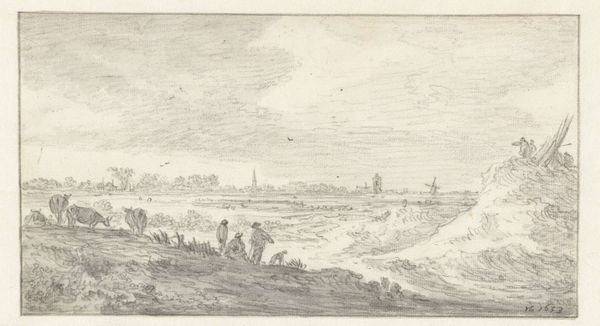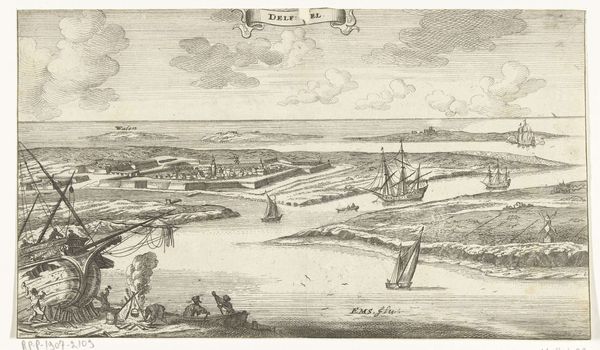
drawing, pencil
#
pencil drawn
#
drawing
#
dutch-golden-age
#
pencil sketch
#
landscape
#
pen-ink sketch
#
pencil
#
realism
Dimensions: height 185 mm, width 480 mm
Copyright: Rijks Museum: Open Domain
Curator: Before us is Aelbert Cuyp’s “Vergezicht over een rivierland,” created between 1648 and 1652. It is currently housed here at the Rijksmuseum. What are your initial thoughts? Editor: A feeling of immense space strikes me, a panorama rendered in delicate grays. The human presence feels so small, almost insignificant against the scale of nature. There's a sense of serenity but also a melancholy, maybe because of the muted palette. Curator: Indeed. Look closely at how Cuyp uses pencil and ink to build up the landscape. Notice the varying pressure to achieve depth. He's manipulating a humble medium to create something grand. This drawing provides insight into 17th century Dutch landscape techniques, revealing the labour and time involved in producing an image intended to represent the burgeoning Dutch landscape and wealth. Editor: And consider the context. This "rivierland," the river landscape, wasn't just scenery. It was the engine of Dutch economic power. The waterways facilitated trade, the land supported agriculture. The figure in the foreground with his dog reinforces a subtle commentary on land ownership. The artwork can be viewed as a depiction celebrating newfound Dutch prosperity but with undercurrents of control and exploitation. Curator: Precisely. And note the composition. The low horizon line, the clouds dominating the sky... It is not simply a picturesque scene; the artist shows how humans manipulate natural resources, impacting ecology and even spirituality. It’s a powerful visual statement, using paper, pencil, and ink as tools. Editor: Also interesting to note, it feels incomplete in some way. Cuyp deliberately leaves sections almost unfinished, like the land beyond the first range of trees and houses, inviting us to consider both visibility and representation but also the unknown elements that go unacknowledged in these historical works. What narratives aren’t being drawn? Curator: A crucial point. Ultimately, Cuyp gives us not just a landscape, but a commentary on the very act of looking, making us confront how social, economic, and material contexts are embedded in even the most seemingly "natural" scenes. Editor: Exactly. It reminds us to critically examine the world around us and the stories we choose to tell about it. This piece demonstrates the complexities of labor, and how we choose to record or even erase history. Curator: A compelling and thought-provoking drawing, indeed.
Comments
No comments
Be the first to comment and join the conversation on the ultimate creative platform.
